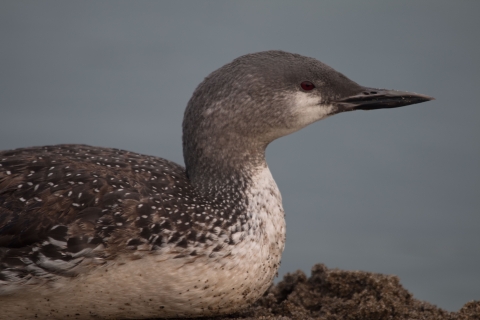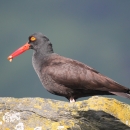Seasons of Wildlife
Spring
Spring is a time for mate-wooing, nest-building, and brood-rearing among the seabirds. Colonies of breeding pairs and their young commandeer the rocks and islands, though not in the plenitude of decades past. (Rebounding Bald Eagle populations are partly to blame.) Three Arch Rocks remains the largest breeding colony of Tufted Puffins in Oregon. In April and May, look also for pupping Harbor Seals on secluded beaches or reefs.
Remember: However adorable these creatures may be, do not disturb them! Undue stress wreaks havoc on growing families.
Summer
The warmer, sometimes-sunny days of coastal Oregon summer offer ample opportunity to get outside and get familiar with our breeding seabirds. As brood-rearing began in spring, by summer the colonies are teeming with loud, awkward, quickly-growing chicks. From May to August, the beloved Tufted Puffin can be found nesting on Haystack Rock at Cannon Beach and Face Rock in Bandon.
Further off the Oregon coast, Steller Sea Lions give birth to pups in June and July. Look for their golden-furred masses hauled out at Three Arch Rocks, Rogue Reef, and Shell Island.
Fall
Fall brings rain and storms to the coast, but it also heralds the arrival of many of our winter migrants. Look for forerunners of wintering species such as scoters, goldeneyes, buffleheads, loons and Brandt geese.
And if the days are too dreary even to bird, many of Oregon's coastal state parks—of which there are several affording excellent views of the refuge's namesake islands—boast edible fall mushrooms to pick.
Winter
The Oregon coast is prime whale-watching territory. Gray Whales, Humpback Whales, Orcas, even Sperm Whales can be spotted here on their annual migrations. The most common sightings are California Gray Whales, migrating to and from their feeding grounds in Alaska's Bering and Chukchi Seas, and their breeding and calving grounds in Baja California.
The best viewing times along the Oregon Coast are during the months of December and March. However, some pods of gray whales are considered residents, and remain near the Oregon coast throughout the year. Bundle up, grab binoculars and head for the coast to catch a glimpse of these seafaring giants.
Featured Species
No matter what time of year one visits the Oregon coast, wildlife are plentiful and often easy to see. Because Three Arch Rocks NWR lies offshore and is closed to the public, visitors should plan on taking the long view: binoculars or spotting scopes are highly recommended. As always, don't forget the camera!
Three Arch Rocks NWR historically was home to one of the largest seabird colonies on the Oregon Coast, with more than 200,000 Common murres breeding on the islands. Recently, the rocks' populations of various species of seabirds has decreased sharply, largely due to Bald Eagle disturbance. Seabirds continue to breed on the islands, albeit in lower numbers. These include Common Murre, Brandt’s, Pelagic, and Double-crested Cormorants, Western Gulls, storm-petrels, auklets, Black Oystercatchers, Tufted Puffins, and Pigeon Guillemots. The entire refuge is identified as an Important Bird Area (IBA) by the National Audubon Society.
Additionally, Three Arch Rocks is home to multiple species of pinniped, a group which includes seals and sea lions. Seal Rock, within Three Arch Rocks NWR, is the northernmost breeding site of Steller Sea Lions in the lower 48 states. Around a dozen pups a year are reared there in mid-summer. Up until December 2013, Steller Sea Lions were a federally threatened species in Oregon; they remain so in the Aleutian Islands of Alaska—their main concentration.









